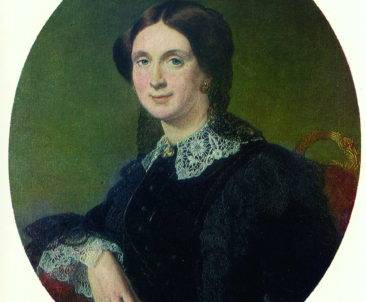
In the Voronezh Regional Art Museum. Kramskoy presented several works of the famous Russian portraitist Vasily Andreyevich Tropinin. His work is distinguished from a galaxy of painters of the early XIX century by the simplicity and sincerity of poses, the truthfulness of the characters and the authenticity of the details. Vasily Tropinin tried not to overload the details of his work, his models have a minimum of accessories, they are written on a neutral background, the main character of his works is a person, not his status and wealth, the front portrait is not at all close to the artist. And it’s not surprising.
Vasily Tropinin was born on March 30, 1776 in the family of a serf belonging to Count Minikh. The father of the artist received a free service for his service, and his family became a member of the daughter’s dowry and became her husband’s property, Morkova II. The propensity for drawing and talent in the boy was noticed by the Count’s cousin, and insisted on the arrival of Tropinin as an entertainer to the Academy of Arts . After studying at the academy under the direction of Academician Stepan Shchukin until 1804, the artist achieved a silver and gold medal for his services, and according to tradition in the Academy, Tropinin expected to receive freestyle, but this was not to come true. The Count recalled him to his estate in Ukraine, where Vasily Tropinin was destined to meet his future wife, a free farmer Anna Katin. By law, marrying a serf, she also became the property of Morkova. Only in 1823 the 47-year-old artist got free, but his family remained in serfdom for another five years.
Vasily Tropinin lived a hard but surprisingly creative life, created a huge number of portraits, the artist died in 1857 in the spring of May 15, was buried in Moscow at the Vagankovskoye cemetery.
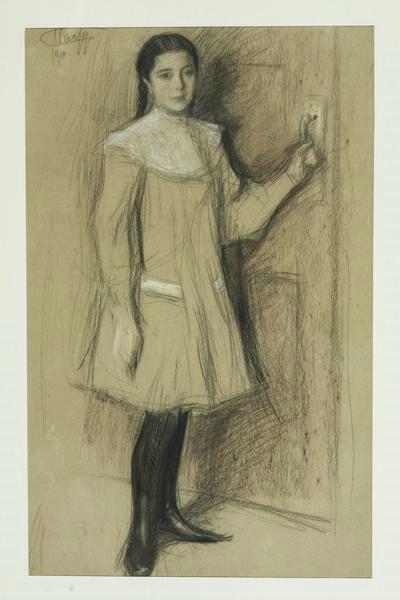
His name remains in the shadow of his son – Nobel laureate Boris Pasternak, but his paintings are kept in major museums around the world. April 3 marks 155 years since the birth of the brilliant portraitist, the magnificent illustrator Leonid Pasternak.
The future artist was born in a large family in Odessa. Despite the son’s infatuation with drawing, his parents wanted to give him a completely different profession. Following their will, Leonid Pasternak enrolled in the Moscow University in the medical faculty, but then transferred to the Faculty of Law at Novorossiysk University. In 1883 Leonid Pasternak entered the Munich Royal Academy in parallel, where he studied with the brilliant draftsman Ludwig von Herterich.
After the service in the army, Leonid Pasternak wrote his first big picture – “Letter from the Motherland”, Pavel Tretyakov bought this work directly from the easel for his famous gallery. But the favorite subject of the artist were family sketches. In 1889 Pasternak married Rosa Kaufman, in this marriage four children were born: sons Boris and Alexander and daughters Josephine and Lydia.
Pasternak is called the first Russian impressionist, in his works he allowed himself and generalizations, and flowing contours, skillfully owned the color, seeking a soft glow, characteristic of many of his paintings. Leo Tolstoy very highly appreciated the amazing, sharply distinguished against the background of realistic painting work Pasternak. They met in 1893 and from that moment the artist painted several portraits of the great writer, and also created some of the best illustrations to the works of Tolstoy.
Leonid Pasternak wrote a series of portraits of Einstein, with whom he met in Berlin. The painter is also considered the founder of Leninyan – he was one of the first to capture the leader, making sketches at congresses and congresses.
In 1921 Pasternak with his wife and daughters went to Germany for treatment. He did not return to the Soviet Union any more. In 1923 there was an essay by the artist “Rembrandt and Jewry in his work”. In 1938, being in Germany became especially dangerous, Leonid Pasternak was going to return to Moscow, but before he decided to visit his daughter, who lived in Oxford. The war forced the artist to stay in England. He died on May 31, 1945, on May 2, 1999 in the house where the Russian artist lived, the museum of Leonid Pasternak was opened.
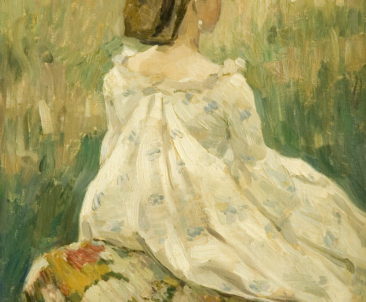
Victor Borisov-Musatov – an artist who organically combined in his work impressionism and symbolism, the master of “aerial” images.
He was born in Saratov on April 14, 1870 in the family of a railway employee. In early childhood, he suffered an injury to the spine, from which, over time, the hump began to grow on his back. The seal of this trauma, the illness reflected on the entire life of the artist. Despite this, Victor Borisov-Musatov was a lively, sociable person, a born leader. The artist saw how his creative method, the combination of impressionism and symbolism, is supported and developed by the young painters.
Since 1890 Borisov-Musatov has been studying in Moscow and St. Petersburg for four years, returning to Saratov for the summer. It was the native land that greatly influenced the artist’s perception, was reflected in his works in a peculiar way. Student works by Borisov-Musatov became the object of criticism among educators, but they delighted young artists.
In 1895, Borisov-Musatov went to Paris, where he spent several winters, getting acquainted with modern art. Especially attracted the attention of the artist’s “pure” impressionism, but at the same time he seeks to fill his paintings with a spiritual impulse, philosophy.
In 1898, Borisov-Musatov returned to Russia, lives in his native Saratov, gets acquainted with the old landed estates. By the way, the artist is often called the “master of the image of noble nests.” In his work not only shows the old family estates, it reflects the change of epochs, the feeling of breaking old life.
The creative flowering of the artist begins in 1901. After an attempt to address the topic of antiquity, Borisov-Musatov decides to dedicate his work to depicting a woman, nature, Russian antiquity. Paintings Borisov-Musatov – is the embodied light and spirituality.
In the last months of his life, the artist managed to create paintings that are considered the apogee of his work, works that can be called “decorative plener”.
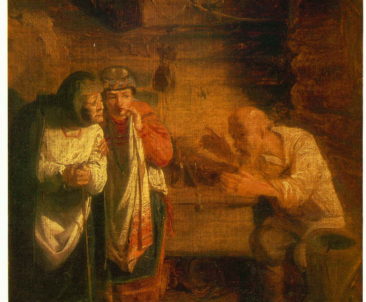
Grigory Myasoedov – one of the most outstanding representatives of realism in the second half of the XIX century, participated in the foundation of the Association of Traveling Art Exhibitions.
Grigory Myasoedov belongs to an ancient noble family, was born in 1834. Not graduating from the Orel gymnasium, entered the Academy of Arts. Having received a pension for a trip abroad, the artist visited Spain, France, Italy.
Upon his return to Russia, he was awarded the title of academician, took an active part in the organization of the exhibitions of the Association of Traveling Art Exhibitions.
Grigory Myasoedov – master of national paintings. In his work he reflected the way of life of peasants and philistines. In addition to genre works, Grigory Myasoyedov also created landscapes, most of which are images of the Crimea. In Myasoedov’s work a wide variety of topics can be traced, including religious themes. There are in the artist’s heritage and portraits.
At the end of his life, the artist settled in the estate near Poltava, where he organized a drawing school. In addition, Grigory Myasoyedov created scenery for the local theater. The hobby of the artist was gardening. They even issued a specialized brochure.
Grigory Myasoedov died in his estate in 1911.
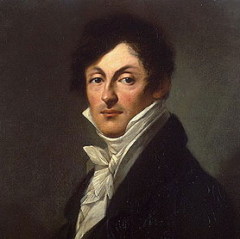
Pierre Paul Prudhon was born on April 4, 1758 in the family of a stone carver. In 1773, Pierre Paul Prudhon moved to Dijon, where he began his studies at the Art School. Later, to continue his studies, the artist goes to Paris and enters the Royal Academy of Painting and Sculpture.
In 1784, Prudhon received the Roman Prize, giving the right to go to study in Rome. The journey through the Apennine peninsula took the artist more than four years. During the trip, Prudhon studied the work of Italian artists. A great impression on him produced the works of Leonardo da Vinci and Antonio da Correggio.
Returning to Paris, the artist begins to make a living by drawing. His first order Prudhon receives in 1798 – painting the ceiling in the palace of Saint-Cloud.
After Napoleon comes to power, Prudhon performs court orders. The artist was repeatedly given work by the Empress Josephine and Maria-Louise of Austria.
The artist is known for his paintings on mythological, allegorical subjects. In addition, Prudhon was one of the outstanding portraitists of his time. “Portrait of Josephine Beauharnais”, “Portrait of Empress Maria Louise”, “Madame Jarre” – paintings that clearly demonstrate the artist’s talent to convey the mood of the model subtly.
In the works of Prudhon, you can trace the features of late classicism, which are harmoniously combined with softness in the manner of performance. The works of Prudhon are characterized by some sentimentality, and in this regard they anticipate their time. Prudhon seems to be peering into the era of Romanticism.
In addition to creating paintings, Pierre Paul Prudhon also developed interiors in the spirit of classicism.
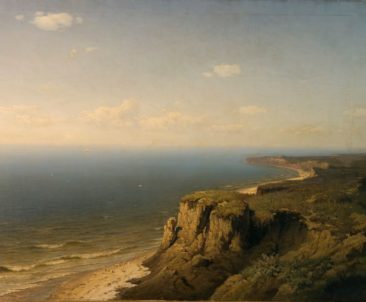
The son of the priest of the Kherson diocese himself, at the request of his father, preparing to become a priest, Sudkovsky accordingly got an education, studying first at the Ochakivs’ spiritual school, then at the Odessa theological seminary. But the priestly activity soon ceased to attract him. Already in his childhood, the ability to paint began to show up in him, and at an adolescent age, especially during his stay in Odessa, under the impression of the southern sea with its enchanting beauty, the artist finally woke up, and he became one of the most zealous visitors of the drawing school of the Odessa Society lovers of art.
Sudkovsky occupied an outstanding place among Russian artists. Undisputed talent and serious unceasing work on him promised Sudkovsky a glorious future, but his premature death did not come true to these expectations: he died on February 4, 1885, from typhus, at the age of less than 35 years, in the prime of life, without completing definitively as an artist, to realize the hopes that were placed on his talent. In the year of Sudkovsky’s death, his friends organized a posthumous exhibition of his works.
The total number of paintings Sudkovsky very significant, especially if you take into account the shortness of his artistic career. The best of them are: “Ochakiv Pier” (located in the Russian Museum), “Calm” (ibid.), “Daryal Gorge” (ibid.), “Night”, “Transparent Water”, “Stormy Sea”, “Calm” (in the Tretyakov Gallery), “Storm near Ochakov”, “Noon”, “Dawn before sunrise”, “There will be a storm at night”, “Kinburn spit after the rain”, “Dnieper girla”, “Catching herrings”, “Fight Vesta with Turkish monitor “.
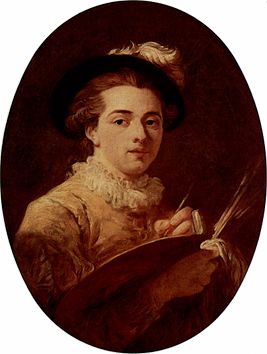
Playful and frivolous, filled with joy and love of life, executed elegantly and elegantly by the great rococo master Jean-Honoré Fragonard, these works stand out from the variety of pastoral scenes with a subtle pattern and gentle color. He is an outstanding, brilliant painter of his time – a gallant eighteenth century.
Jean-Honore Fragonard was born April 5, 1732 in the family of the glover. As a young man, the future artist finds himself in the workshop of the famous François Boucher. Education in those years passed through an uncomplicated system – the student copied the works of the teacher, thereby improving his skills. Fragonard was particularly diligent and persistent, customers did not distinguish copies made by him, from the originals. The young man also copied the works of old masters, especially enthusiastically – Rembrandt. In 1752, Boucher advised the young painter to participate in an academic competition, the victory in which allowed for several years to become a “pensioner” of the French Academy in Rome. The competition accepted historical painting, which at that time was not alien to Fragonar – “Rest on the way to Egypt”, “Adoration of the Shepherds”, “Christ washing the feet of the apostles” (a canvas executed by the artist before the trip to Italy, and still adorns altar in his native Grasse).
However, the historical themes did not particularly fascinate Fragonard, he switched to writing pastors and scenes that are very characteristic for the Rococo era. His works are full of sensuality and lightness, they convey the joy of being and the boundless youthful thirst for life. Fine black and white effects are combined with the refinement of color and the softness of the composition.
Fragonard is a master of a fleeting drawing from nature, the characters of his paintings are natural, passionate, full of living human emotions. The nature is also characteristic of the portraits of the artist, Denis Diderot was captured by Fragonard at the moment of illumination, the philosopher, tearing himself away from reading, directs his inspired look.
By the end of the eighteenth century, the “lightness” was replaced by the severity and patheticism of classicism. The outbreak of the revolution forced the artist to move to Grasse, but after a very short time, Fragonard returned to Paris. In January 1794 he was elected a member of the Museum Commission and began to work on the formation of the Louvre collection.
The artist died on August 22, 1806.
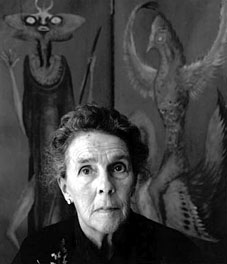
Her fate is no less surreal than her paintings: an Englishwoman from an aristocratic family, a rebel who rejected high values and escaped with one of the leaders of the avant-garde movement to Paris, and subsequently a well-known Mexican artist, where her work is recognized as a national treasure.
A hundred years ago on April 6, 1917, Lenora Carrington was born. The obstinate girl was replaced by more than one educational institution, and everywhere she was given unflattering characteristics – “an unbearable and incorrigible child.” The only thing she liked was art. The Carringtons were not connoisseurs of painting, but under the pressure of their daughter could not resist – Lenora went to study in Florence, and then in London, the Academy of Arts of Chelsea.
In 1936, the capital of England hosted an exhibition of surrealists, where there were also paintings by Max Ernst, the leader of French avant-garde artists. Lenora Carrington was delighted with his work. A year later they met at a party. Lenore was 20 years old, Max Ernst – 46, but neither the difference in age, nor the fact that her chosen wife is married, did not embarrass the daring Englishwoman. “He taught me everything – art, literature. My education is from Max … I was not a surrealist, I lived with Max Ernst, “Carrington said later.
Their happiness ended with the outbreak of World War II. Max Ernst was a German, which was the reason for several arrests. Lenora had a nervous breakdown, because of which she was taken to a psychiatric hospital. There is a legend that the Carringtons, upon learning about the state of their daughter, sent her a nanny for her on a submarine. But, one way or another, Lenora got out of the clinic and moved from the hardships of war-torn Europe to Mexico. This helped her friend Picasso Mexican poet Renato Ludic, thanks to a fictitious marriage with him, the artist was able to obtain a Mexican visa.
The new homeland gave Lenore Carrington a new life. She had friends and like-minded people – photographer Kati Horn, Mexican poet Octavio Paz, Frida Kahlo and Diego Rivera, Spanish artist Remedios Varo and her husband, the poet Benjamin Peret. Lenora Carrington married the photographer Emeriko Weiss, with whom she lived for many years and gave birth to two sons.
In her work, Celtic legends in a bizarre way connected with Mexican mysticism and folklore of the Maya Indians.
Lenora Carrington did not become May 25, 2011.
In 2016 in Russia the book of the artist “Auditory tube” was published.
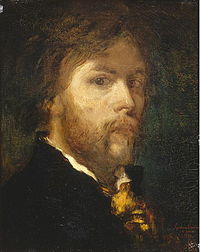
April 6, 1826 in the family of a Parisian architect was born Gustav Moreau, a French painter and graphic artist.
His private life was so closed from others, the circle of communication is limited only to the closest people, that Moro’s name is shrouded in an atmosphere of mystery to this day.
The artist was educated at the School of Fine Arts, where he entered in 1846, however, considering it inadequate, he lived for about 2 years in Italy, copying the paintings of old masters.
In the fall of 1859, Moro returned home and met a young woman, Alexandrina Dyure, who worked as a governess near his workshop. Despite the artist’s categorical refusal to marry, they will not live together more than 30 years. After the death of Alexandrina in 1890, the artist devotes one of his best paintings to the beloved – Orpheus at the Tomb of Eurydice.
Gustav Moreau preferred mythological and religious subjects, his works are full of details and full of allegories. Painting Moro enjoyed success among his contemporaries, critics call him “savior of historical painting.” The last romanticist of the nineteenth century, he sharply rejected his allegiance to symbolism, and, being an inveterate conservative, Moreau had a great development of new artistic trends and trends. His work became the forerunner of modernism, and Matisse and Ruo, his devoted disciples, were the founders of Fauvism.
Moro himself did not want to recognize himself as unique or detached from time, or, even more so, incomprehensible. He saw himself as an artist-thinker, but at the same time, which emphasized, put color, line and form first, and not verbal images. Wanting to protect himself from unwanted interpretations, he often accompanied his paintings with detailed comments and sincerely regretted that “until now there was not a single person who could seriously talk about my painting.”
Gustave Moreau died of cancer on April 18, 1898, bequeathing the state house with all the works there and all the contents of the apartment.
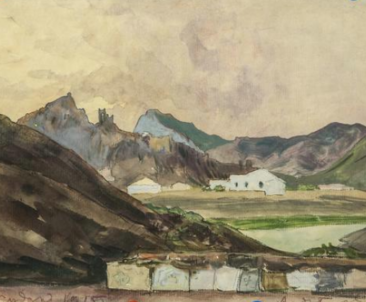
Alexander Benois is a Russian painter, graphic artist, illustrator, theater artist, outstanding publicist and critic. He was born on May 3, 1870, becoming the fifth child in the family of architect Nikolai Leontievich Benois. Interest in ancient engraving, the copying of old masters in the museums of Italy and France formed a special artistic taste of the master.
Benois at the end of the XIX century, together with Sergei Diaghilev founded the association “World of Art”, and later became the editor-in-chief of the eponymous magazine. The artistic orientation of the “World of Art” was associated with modernity and symbolism. Prioritizing the aesthetic principles in art, Alexander Benois, the ideological inspirer of the association, preferred stories historical rather than real. However, in 1915, during a trip to Sudak, where the artist was resting in the house of his niece Camille Benois, he created the delicious, delicate and airy watercolor landscapes of the surroundings of Sudak. One of these works is kept in the Voronezh Regional Art Museum named after IN Kramskoy. Pike perch Benoit is not only restrained beauty of landscapes, it is some timeless space that brings back the viewer during Odysseus’ travels. Exquisite and complex coloring in combination with strict graphics of the picture captivates with its restrained aristocracy.
In the landscapes of Alexander Benois there is theatricality – nature interests him mainly in its connection with history. Alexander Benois worked a lot as a theater artist, making performances not only in Russia, but also in such famous theaters as La Scala in Milan. He took part in the design of Diaghilev’s Russian Seasons in Paris, created scenery for ballets and dramatic plays.
The decoration of the “Weddings of Figaro”, staged in 1926, Benoit’s last work in Soviet Russia. In the same year Alexander Nikolaevich Benois moved to Paris, where he died on February 9, 1960.